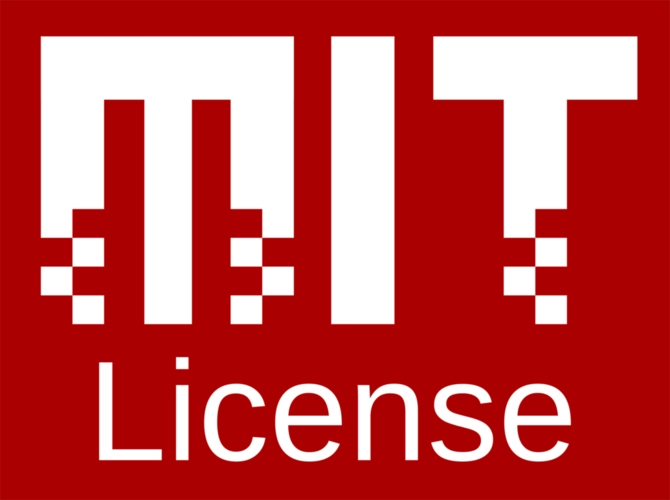Week 19 - Invention, Intellectual Property, And Income
Design a Task Management Calendar for me
I plan for an AI assistant with a physical calendar interface, powered by an NVIDIA Jetson unit running a large language model, with an external display and a portable, voice-activated module. This is on Aril 6th.
My idea is reference by this project: AI Incense, which is built by Kai Zhang, from Harvard Graduate School of Design.
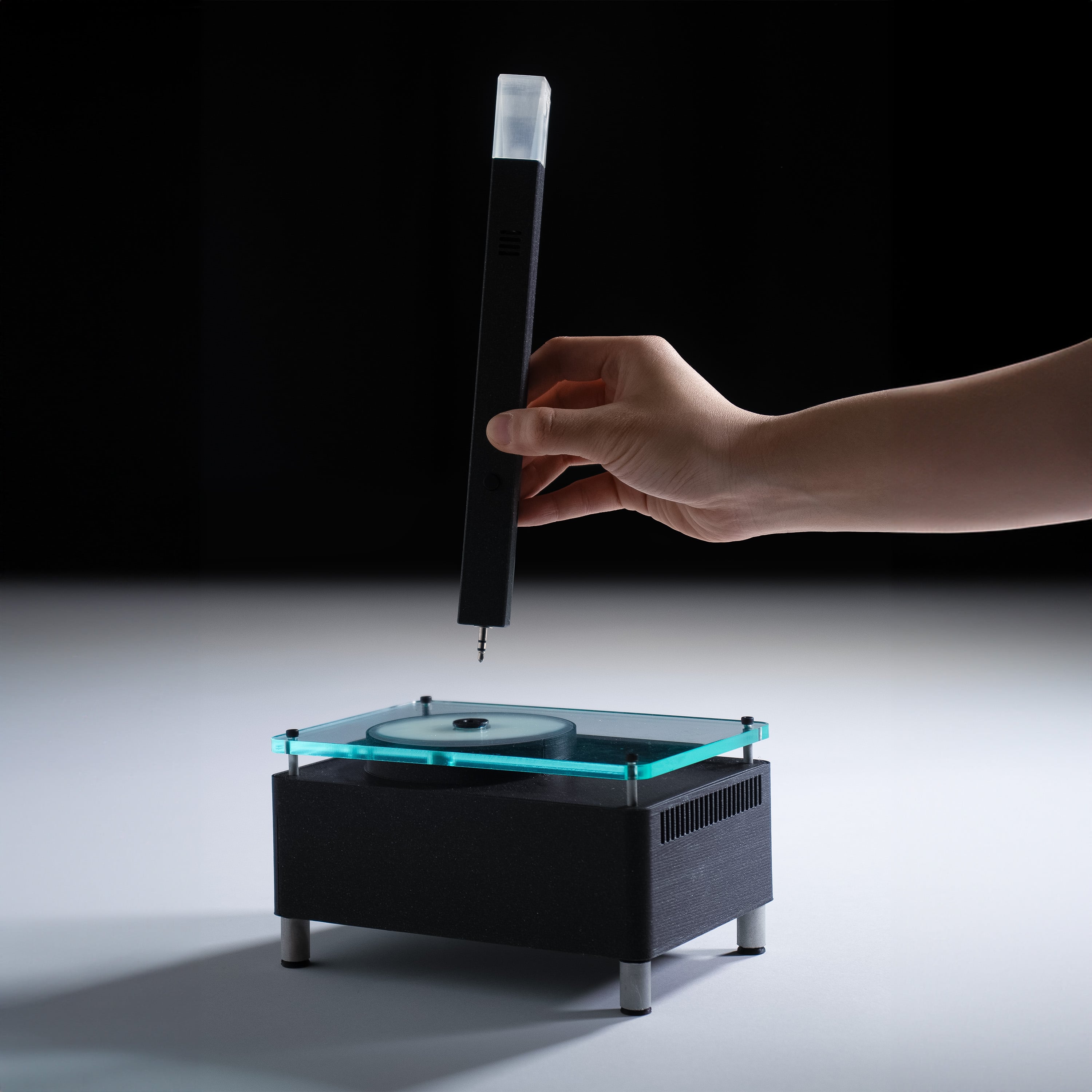
We used to a Maker Camp event and at the first we invited 10 MIT researchers to co-create meaningful and open source hardware projects in Shenzhen, explore the tech ecosystem frontier, and join maker networks to explore the local scaling power. I have shown Kai around:
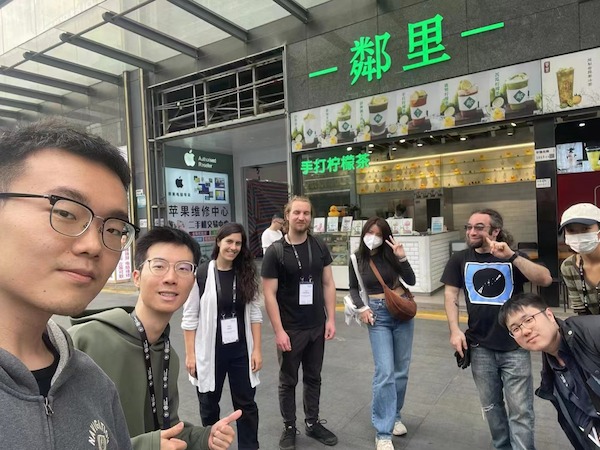
The first one on the left is me, and the second one is KAI. Later he showed me about his design:
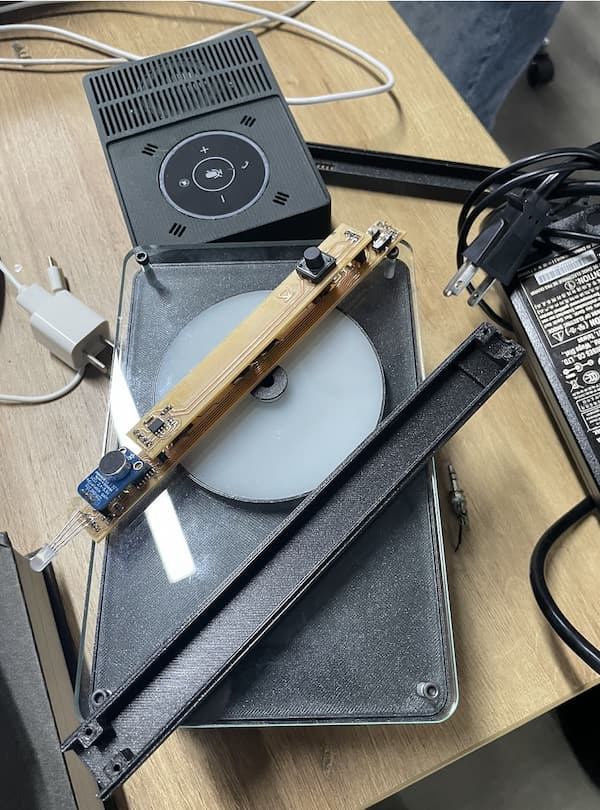
Base on his idea, I am thinking to build a local LLM-powered Task Management Calendar for myself:
- Manage different types of products, ensure the description and other content meet the standards.
- Output the priority of the tasks, ensure the meet the timeline, for day/week/month.
It is a task management AI assistant with scheduling capability. In the future, it might have reminder, remote support, wireless function as well.
Project Development
Written on 2024.4.6th, before that day I was too busy handling the company tasks and have so little time on it. Now I am finally doing my schedule:
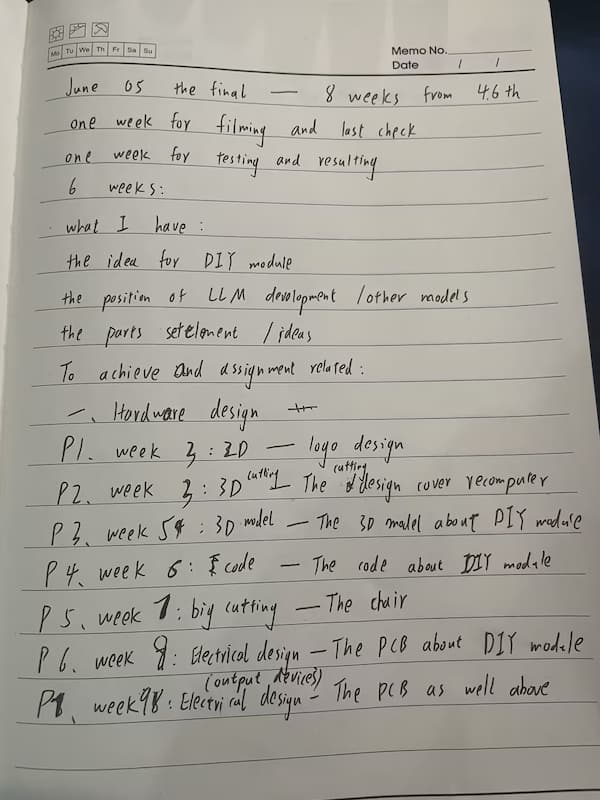
This has been separated to three parts, according to the time:
- The ongoing assignment I should continue
- The previous assignment I should catch
- The final project design

Future Opportunities or Development for Mr.M
- Enhanced Portability
- Enhance Compact Mobile Modules: Use newer, smaller hardware for true mobile portability. - This is for the mobile module.
- Unified Charging Solution: Design a case that charges all devices with one adapter. - This is for the whole system.
- Improved Integration and Synchronization
- Seamless Device Communication: Ensure all devices sync effortlessly.
- Distributed AI Processing: Share computational tasks for efficiency.
- Advanced User Interaction
- Voice and Gesture Recognition: Apply not only voice but also gesture to give the command.
- Customizable Interfaces: Allow users to personalize their experience.
- Market Expansion
- Industry-Specific Versions: Make it more robust, more reliable at the edge.
The Licenses Overview
This document provides an overview of various popular software licenses, outlining their key characteristics and terms.
MIT License
The MIT License is a permissive free software license originating from the Massachusetts Institute of Technology (MIT). It imposes minimal restrictions on the reuse of software, making it highly compatible with other licenses, including many copyleft licenses. Notably, MIT licensed software can be integrated into GNU General Public License (GPL) software, though the reverse is not permissible.
License Text
Copyright (YEAR) (COPYRIGHT HOLDER)
Permission is hereby granted, free of charge, to any person obtaining a copy of this software and associated documentation files (the "Software"), to deal in the Software without restriction, including without limitation the rights to use, copy, modify, merge, publish, distribute, sublicense, and/or sell copies of the Software, and to permit persons to whom the Software is furnished to do so, subject to the following conditions:
The above copyright notice and this permission notice shall be included in all copies or substantial portions of the Software.
THE SOFTWARE IS PROVIDED "AS IS", WITHOUT WARRANTY OF ANY KIND, EXPRESS OR IMPLIED, INCLUDING BUT NOT LIMITED TO THE WARRANTIES OF MERCHANTABILITY, FITNESS FOR A PARTICULAR PURPOSE AND NONINFRINGEMENT. IN NO EVENT SHALL THE AUTHORS OR COPYRIGHT HOLDERS BE LIABLE FOR ANY CLAIM, DAMAGES OR OTHER LIABILITY, WHETHER IN AN ACTION OF CONTRACT, TORT OR OTHERWISE, ARISING FROM, OUT OF OR IN CONNECTION WITH THE SOFTWARE OR THE USE OR OTHER DEALINGS IN THE SOFTWARE.
GNU General Public License (GPL)
The GNU GPL is a widely used free software license that allows users to run, study, share, and modify the software. The GPL is available in three versions and requires that all terms and conditions be made available to all recipients.
Copyleft
The GPL features a copyleft clause, which mandates that any distributed modifications to GPL'd work adhere to the GPL terms. This encourages the free use and modification of software while ensuring that derivatives remain free.
Creative Commons (CC)
Creative Commons licenses facilitate the free distribution of copyrighted works. They are typically used when an author wishes to allow others to share, use, and build upon a work.
Types of CC Licenses
- Attribution (BY): Allows distribution, derivation, and commercial use, provided the original creator is credited.
- Share-alike (SA): Derivative works must be licensed under identical terms to the original work.
- Non-commercial (NC): Only non-commercial distribution and derivation are permitted.
- No Derivative Works (ND): Only verbatim copies may be distributed; no derivative works are allowed.
For Licensing all my works in fab academy 2024 I am using MIT License.
This work by Jianfeng Yu is licensed under a MIT License.
